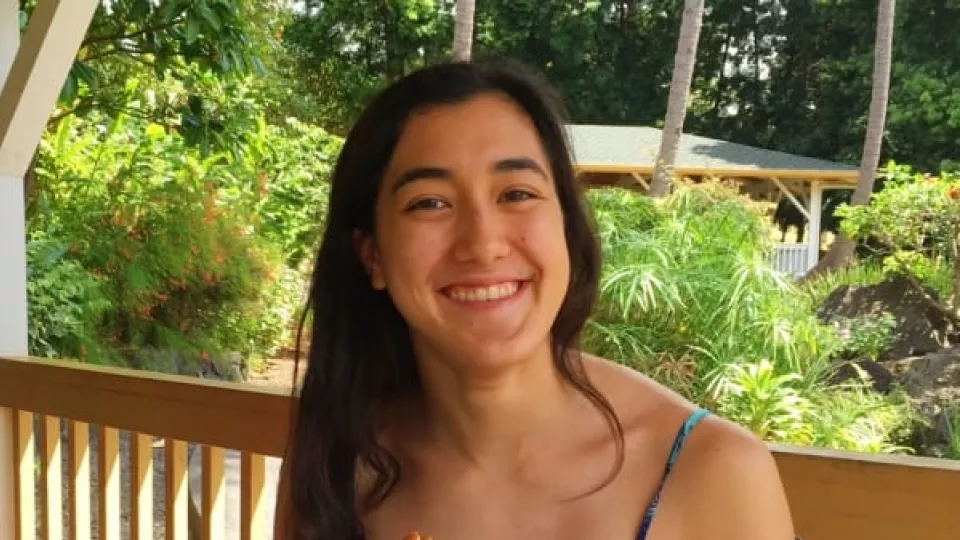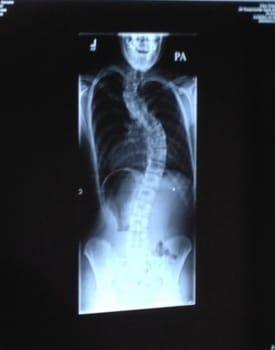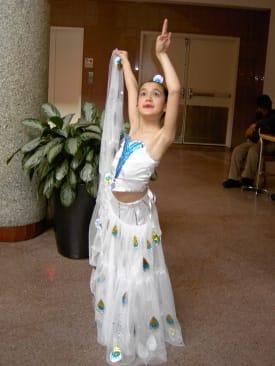
Back In Action
How CHLA helped one teenager overcome scoliosis to soar in gymnastics and in life
Scoliosis surgery at Children’s Hospital Los Angeles gave 17-year-old Danielle Drake new hope for her aerial gymnastics career—and two inches on the height charts.

Danielle, a resident of San Gabriel, went in for her surgery at 5 feet 4 inches and came out five hours later at 5-foot-6. More important, she emerged from the ordeal with a straighter spine, and with renewed optimism that she’d be able to pursue her passions without jeopardizing her health.
“The curvature of my spine was forcing a rib to stick out, and I knew that as time went on my spine would continue to curve and it would cause other problems that would make it harder and harder to recover,” Danielle says. “I was scared but I knew this was the best option for me—an option that ultimately saved my life.”
Danielle’s journey with CHLA began in 2007, when she was 7 years old. At the time, David L. Skaggs, MD, MMM, identified a double spinal curvature—one on the top part of Danielle’s spine and an even more dramatic curve on the bottom part. He immediately diagnosed her with idiopathic scoliosis—the clinical term for scoliosis with an unknown cause—but advised that she could hold off on surgery for a while. By 2011, however, the curvatures in Danielle’s spine had become too large to ignore.
Skaggs’ plan called for surgery—spinal fusion surgery, to be exact. The procedure involved inserting two rods along either side of her spine, which would be held in place with titanium screws.
The first rod went in as planned. The second rod, however, was a different story. After Skaggs inserted it, the still-sedated Danielle experienced temporary paralysis in her lower half—a complication that happens in a small percentage of scoliosis surgeries. To reverse the condition, Skaggs removed the second rod and gave Danielle’s body a chance to adjust to the first rod and its new, straighter position. Danielle returned to the operating room for a second surgery a week later and Skaggs inserted the second rod without incident.
“When you take a spine that’s drastically curved and make it straight, it stretches arteries and stops blood flow,” explains Skaggs, chief of the Children’s Orthopaedic Center and director of the Spine Surgery Program at CHLA. “We didn’t plan to do it in two phases, but that turned out to be the right approach.”
Looking back, Danielle remembers that first week or so after the second surgery as excruciating, and says it took her three days to sit up on her bed and start walking. Still, she persevered. She notes that the technology in her recovery room made her feel like she had checked in to a luxury hotel.
“The room had this incredible touchscreen that let me do everything—watch TV, surf the internet, call the nurses and even order food,” she says. “I don’t even think I took my laptop out of the bag.”
Once she left the hospital, the real work began—strengthening her back and core muscles, relearning how to balance, and finally getting back to aerial gymnastics and dance. Her father, Ken, coached her to try to regain her strength gradually, making sure Danielle never pushed too hard.
Even on the dark days, her doctor encouraged Danielle to keep at it.

“My philosophy is to get patients back to doing the things they love as soon as they feel comfortable,” says Skaggs. “I like to say it’s better to have a broken bone than a broken spirit because you can fix a broken bone and you can’t always fix a broken spirit.”
In the end, Skaggs was able to reduce the curves in Danielle’s spine significantly. The top curve went from 60 to 37 degrees, while the bottom curve went from 65 to 16. (A typical spine is curved about 10 degrees on the whole.)
“We didn’t do this for perfect X-rays,” he says. “The most important thing is that now her body looks balanced, feels better for Danielle and functions much closer to the way it’s supposed to function.”
Danielle also has recaptured almost all of her pre-surgery mobility. She recently was named co-choreographer of San Marino High School’s dance department. This past summer, she and a friend hiked to the summit of 14,600-foot Mount Whitney and back. She is even able to do aerial gymnastics once again.
Though she doesn’t plan to pursue gymnastics or dance formally when she goes to college next year, Danielle says the experience helped teach her valuable lessons about mind over matter, and how to approach challenges in life.
“I have learned that anything is possible,” she says, “and that it doesn’t matter where you come from, but where you end up.”
How you can help
Consider making a donation to Children's Hospital Los Angeles to help kids just like Danielle. Visit CHLA.org/Donate.


